Hurtigruten Fram explores west coast of world’s largest island
The Arizona Republic — August 14, 2011
UUMMANNAQ, Greenland — At the foot of a stunning heart-shaped mountain in a remote village on the west coast of Greenland, 375 miles north of the Arctic Circle, our small group of visitors from the Hurtigruten Fram cruise ship sits riveted to the words of a local hunter and fisherman.
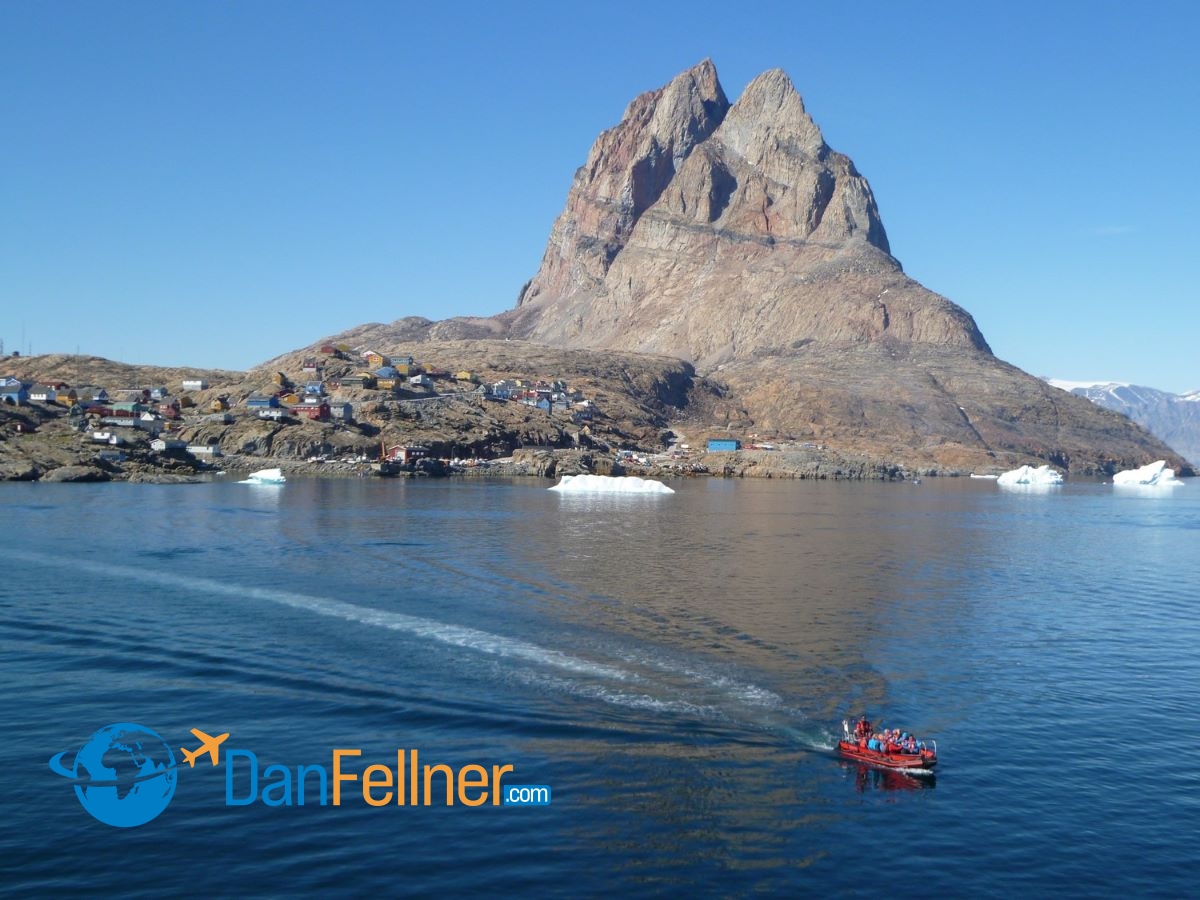
A Hurtigruten tender shuttles passengers back to the Fram in Uummannaq, Greenland.
Speaking in his native Greenlandic language, translated into English with the help of a fellow townsman, 61-year-old Ole Qvist leans on his dogsled and discusses the centuries-old techniques he uses to hunt seals, whales and the numerous types of fish in Uummannaq’s waters.
Suddenly, Qvist’s description of using seal-oil lamps to keep warm during the frigid Arctic nights is interrupted. He reaches into his pocket and pulls out a ringing cellphone. While he chats for a couple of minutes, his fellow Greenlander takes out his phone and begins texting. Our group finds the incident hilarious and no one minds the brief high-tech hiatus.
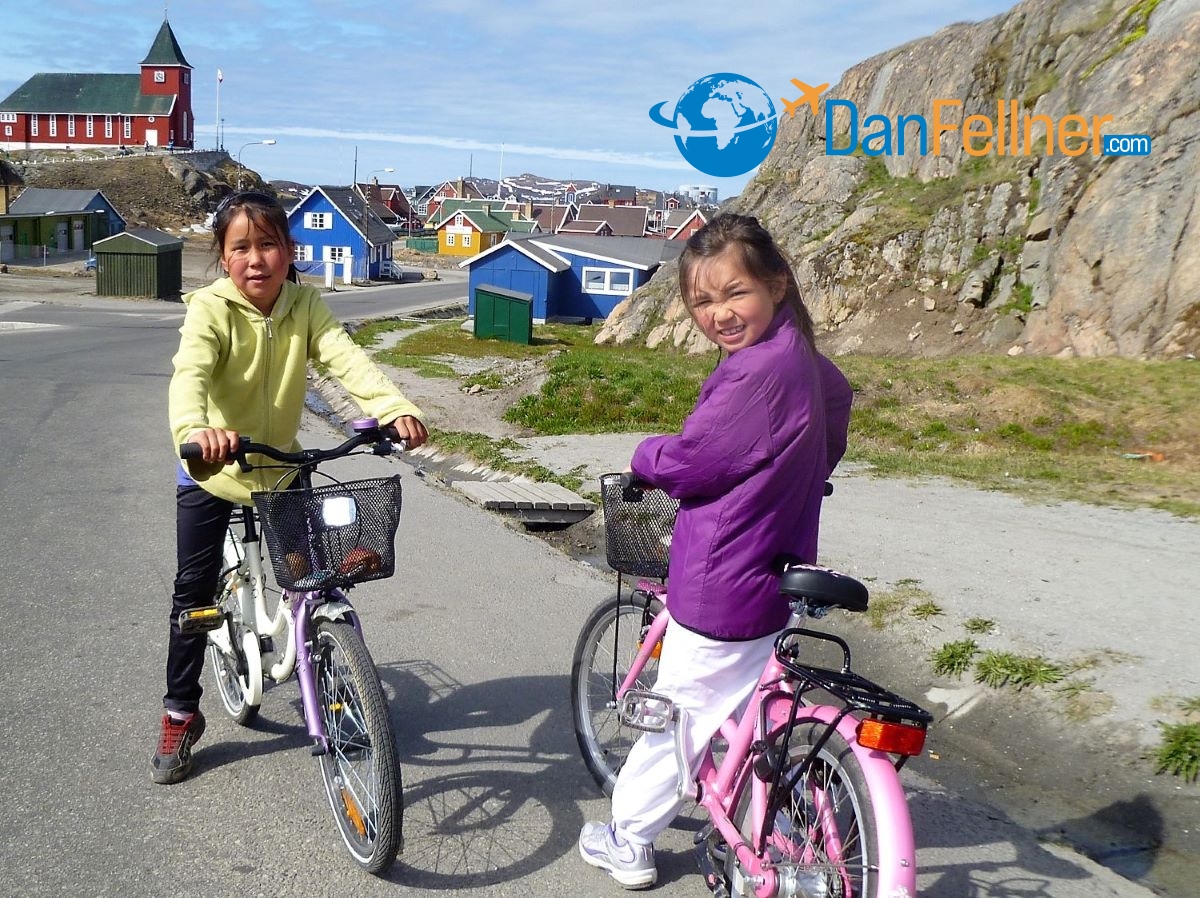
Children in Sisimiut take advantage of the mild summer weather.
Greenland is full of surprises. Only 56,000 people live on the world’s largest island, more than 80 percent of which is covered by ice, yet there are 55,000 cellphones. There are only about 100 miles of paved roads in the entire country, yet Greenland has one of the highest Internet-penetration rates in the world, even higher than the United States.
When it’s dark 24/7 and bitterly cold for several months of the year, cyberspace is a much easier way to stay connected than a dogsled.
For travelers, there are other surprises. I was expecting the jaw-dropping beauty of fjords, icebergs, glaciers and scenic villages with brightly painted houses.
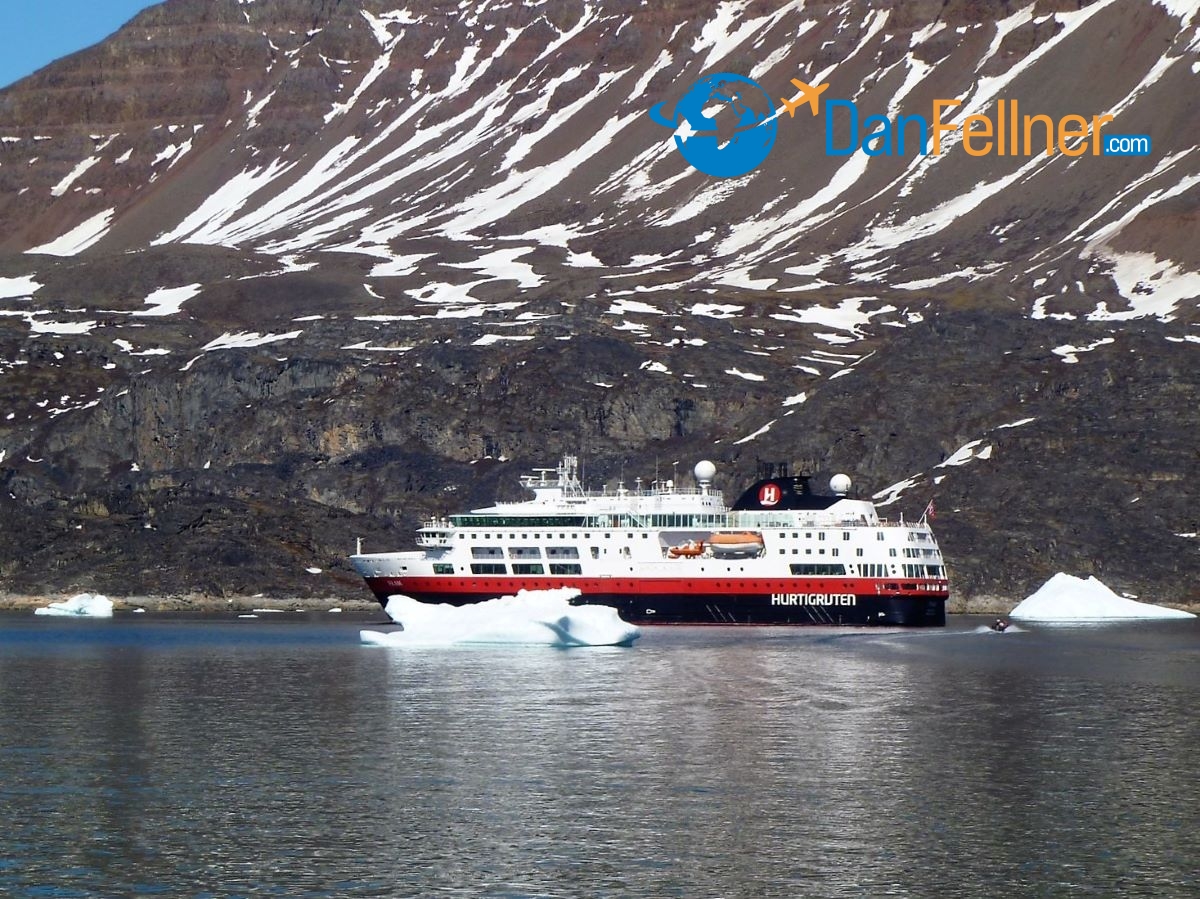
The Hurtigruten Fram anchored in Qeqertarsuag, Greenland.
But I didn’t expect such a rich and welcoming culture. For the first time ever on a cruise, I felt as if the locals living in the small ports invaded by the Fram’s 226 mostly European passengers were as genuinely happy to see us as we were to see them.
And perhaps most surprisingly of all, I came home with more of a suntan than when I left. The June Arctic sun was strong, never set, and the gloves, scarf and hat I packed went unused until the final day, when a cold front blew in and dropped temperatures from the 50s to below freezing.

Greenlanders are an interesting blend of Inuit and Danish cultures.
Greenland brings new meaning to “You can’t get there from here.” Technically, it is part of the North American continent and, at its closest point, is only 12 miles from Canada.
But there are no commercial flights to Greenland from North America. The only way to get there by plane is via Iceland or Denmark. To reach the Fram, a polar-expedition ship owned by the Norwegian cruise line Hurtigruten, I flew to Copenhagen and caught a charter flight on Air Greenland to Kangerlussuaq, the country’s main international airport that was built by the American military during World War II.
The Fram was waiting for us anchored at the head of Kangerlussuaq Fjord, a 15-minute bus ride from the airport.
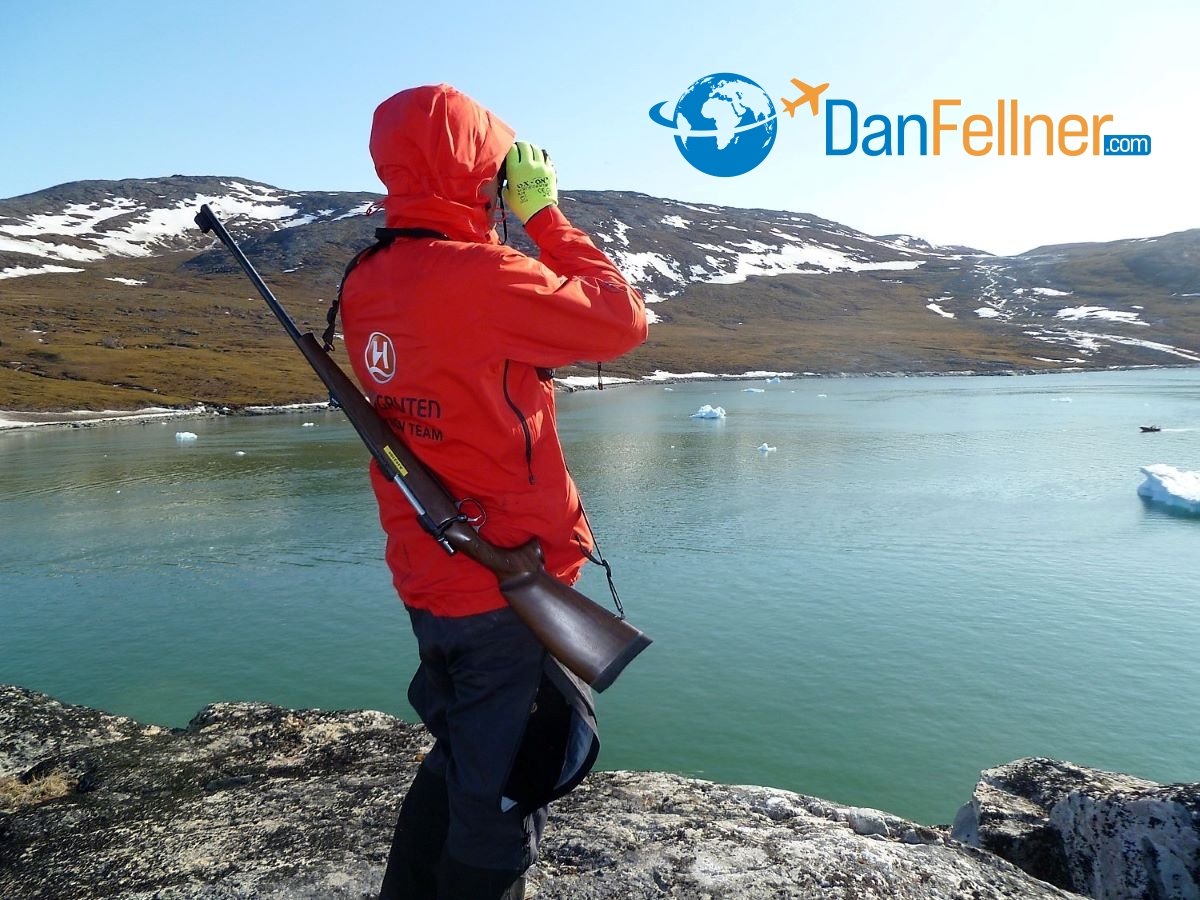
A member of Hurtigruten’s expedition team on the lookout for polar bears in Greenland.
Greenland had long been high on my wish list of places to visit, even more so than Antarctica. Both offer spectacular scenery and wildlife, but only Greenland has an indigenous culture, with both Inuit and Scandinavian influences.
I guess I’m more interested in learning about people than penguins.
Various Inuit cultures have lived here on and off for the past 4,000 years, surviving on hunting and fishing. Scandinavians started arriving at the end of the 10th century; Greenland became a Danish colony in 1814 and still belongs to the Kingdom of Denmark, although it now enjoys almost complete autonomy. The currency is Denmark’s krone, and most people are bilingual, speaking both Danish and Greenlandic.

Elementary school students on a nature walk in Qeqertarsuaq, Greenland.
Cruising is the most economical and practical way to see Greenland, as there are no roads linking the towns and flights within the country are sporadic and expensive. Hurtigruten is the leading player in the Greenland cruise market, with weeklong itineraries offered in summer that go up and down Disko Bay on the west coast. Some of the bigger cruise lines, including Princess and Holland America, make brief stops in Greenland on transatlantic sailings.
The first stop on the Fram’s itinerary was Sisimiut, Greenland’s second-largest “city.” Population: 5,200. The hub of the town is a fish-processing plant, Sisimiut’s leading employer. Hurtigruten organized a two-hour “Hike Back in Time,” which took us to ancient Inuit graves and hunting grounds. At the end of the day we were treated to a kayak demonstration in the harbor.
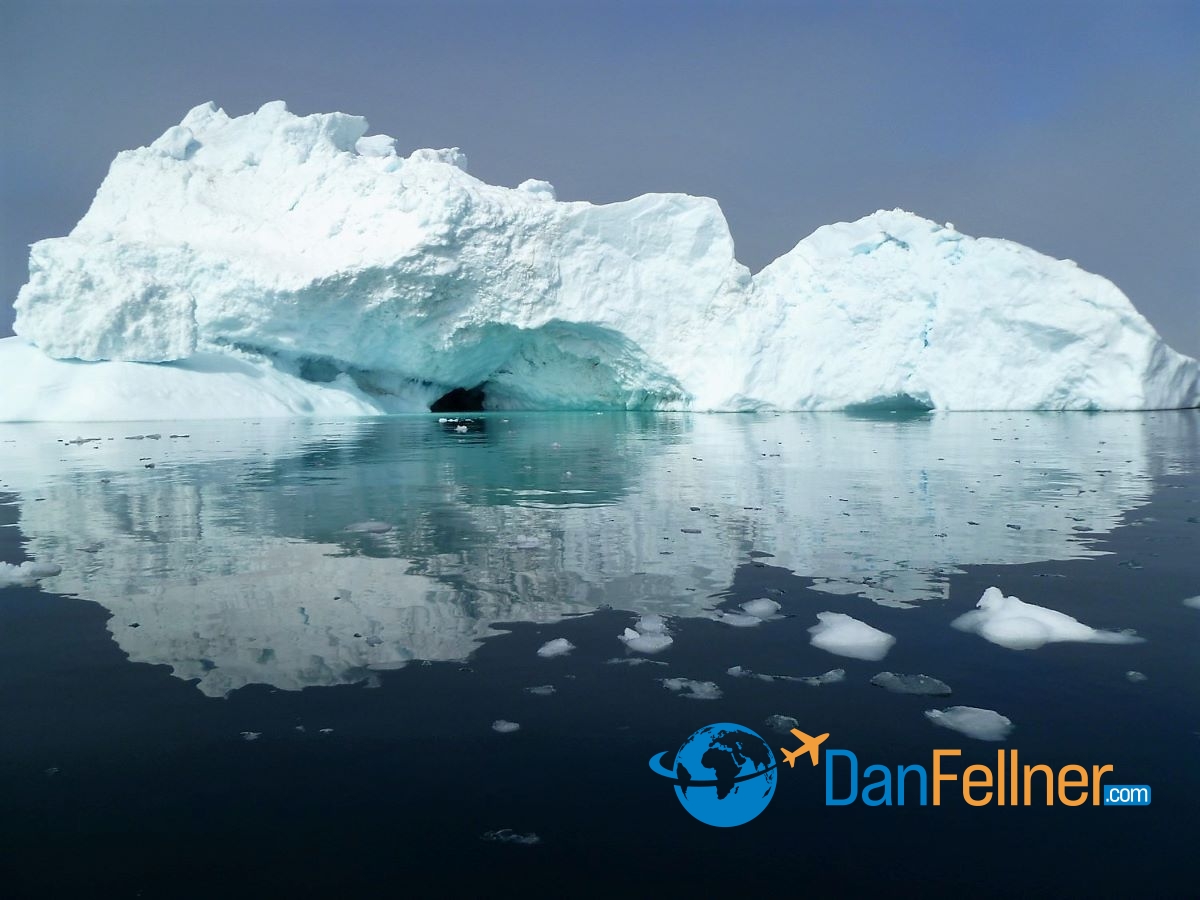
A large iceberg near Ilulissat, Greenland.
Sisimiut was the only stop on our itinerary that had a pier large enough to handle the Fram. For the rest of our stops, we dropped anchor and the ship’s tender boats — “Polar Cirkels” — shuttled us back and forth to the villages, or “settlements” as they are called here.
In the town of Qeqertarsuaq, on the volcanic Disko Island, we were on a guided hike through a valley watching humpback whales feeding in the harbor when we encountered children from a local elementary school on a field trip. Their teacher, Pilunnguaq Broberg, said nature walks are an essential part of the Greenlandic curriculum because so many of the students will end up making a living from hunting and fishing.
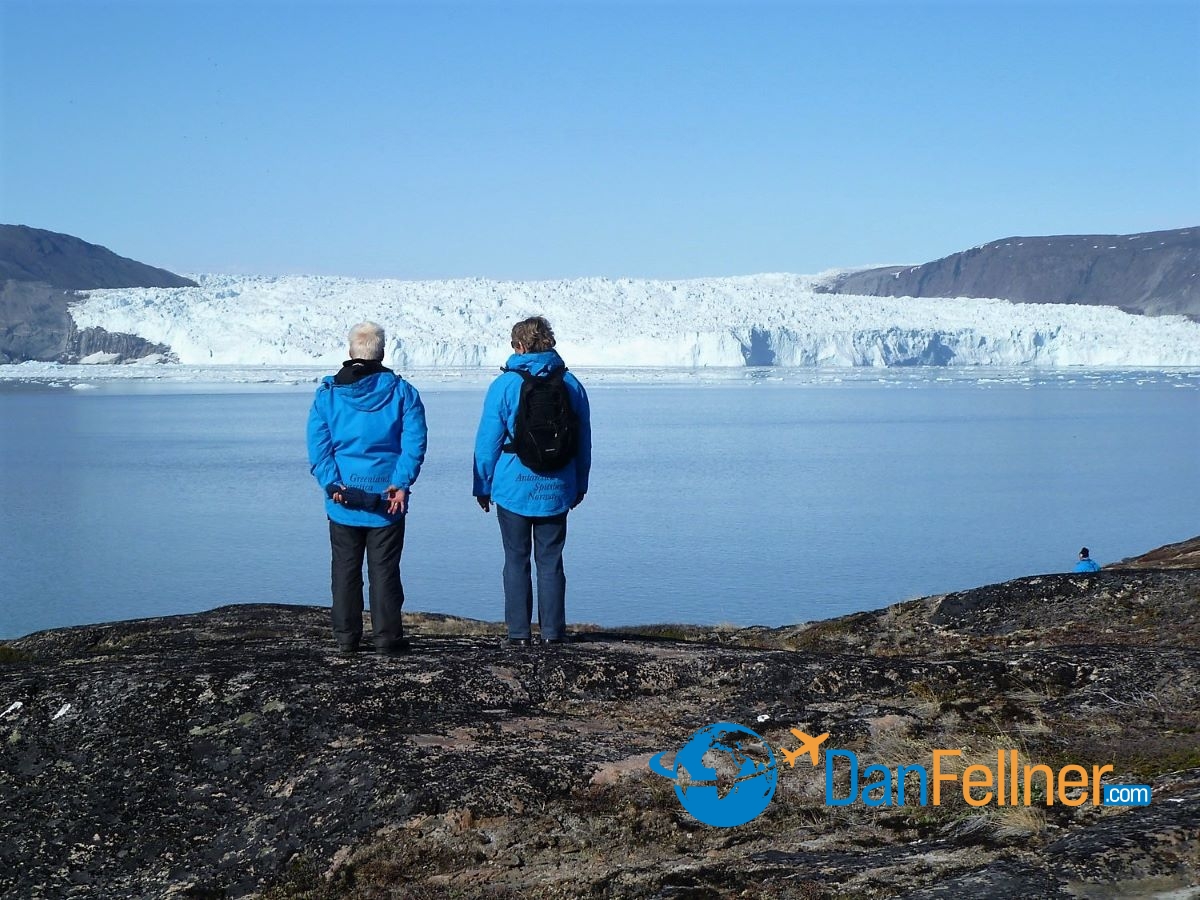
Hurtigruten passengers gaze at the Eqip Sermia glacier.
“Nature is very important to the Greenlandic people,” she said. “We get our food from nature.” She said the staples of their diet are fish, seal, whale and reindeer.
Our Hurtigruten expert lecturers repeatedly reminded us that we were on an “expedition,” not a cruise. They also taught us the Greenlandic word for “maybe” — immaqa. That meant nothing is certain in Greenland and that we should expect possible changes in the itinerary due to unpredictable weather and ice conditions.
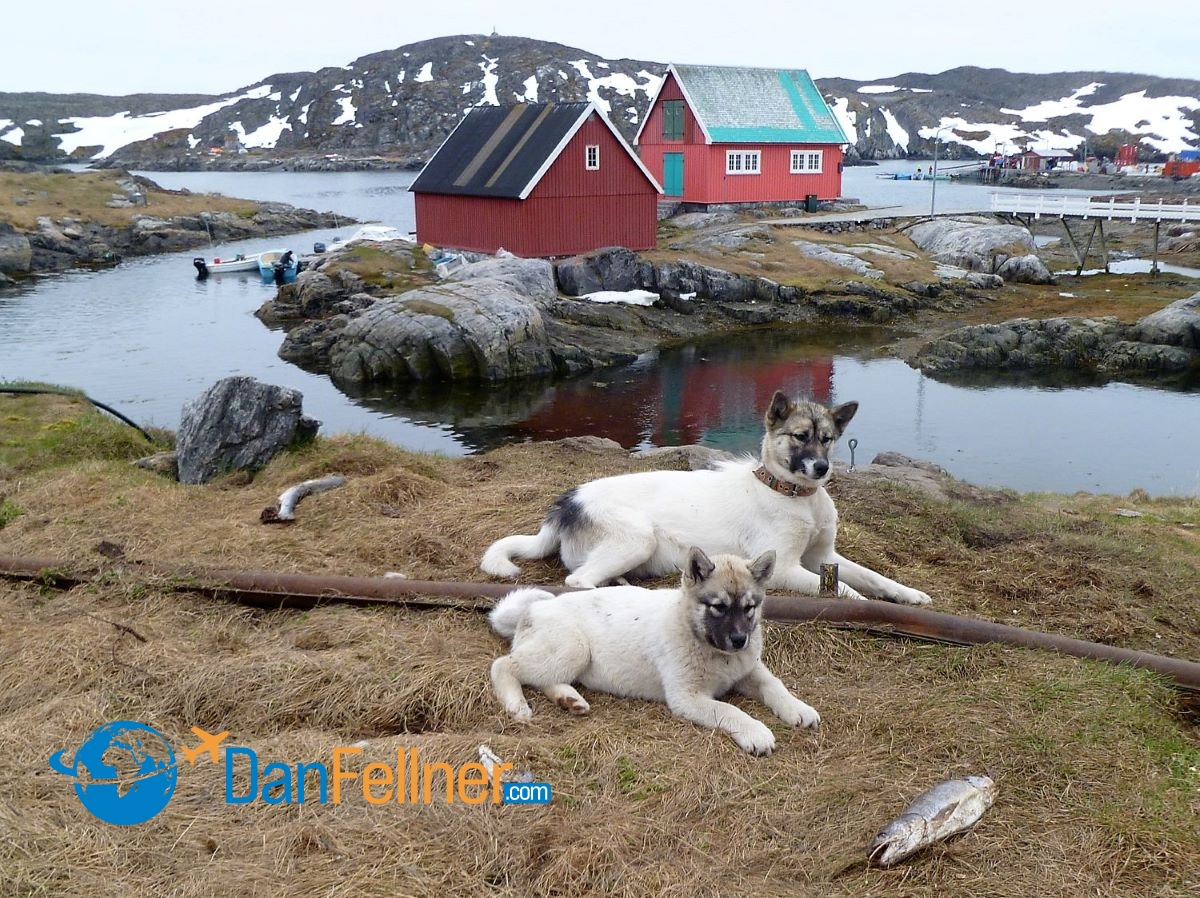
Greenlandic sled dogs in Itilleq, Greenland.
Indeed, too many icebergs in the harbor forced us to cancel a stop in Illulissat, home to the most productive glacier in North America and a UNESCO World Heritage Site. Scientists believe an iceberg that calved from the Illulissat glacier likely sank the Titanic. Although we weren’t able to see the glacier, we spent a marvelous morning viewing the icebergs up close on rides in the Polar Cirkels.
In addition to whales, we saw wild muskox, which look like hairy goats on steroids, and Greenlandic dogs. These are working sled dogs, not pets, that closely resemble huskies. In some of the towns we visited, sled dogs outnumber people.
Polar bears typically aren’t found in this part of Greenland. But as we stopped at an island overlooking the Eqip Sermia glacier, Janus Kleist, a native Greenlander and a member of Hurtigruten’s expedition team, stood guard at the top of a bluff with binoculars and a shotgun, just in case a polar bear emerged from the water.
“Better safe than sorry,” he said.
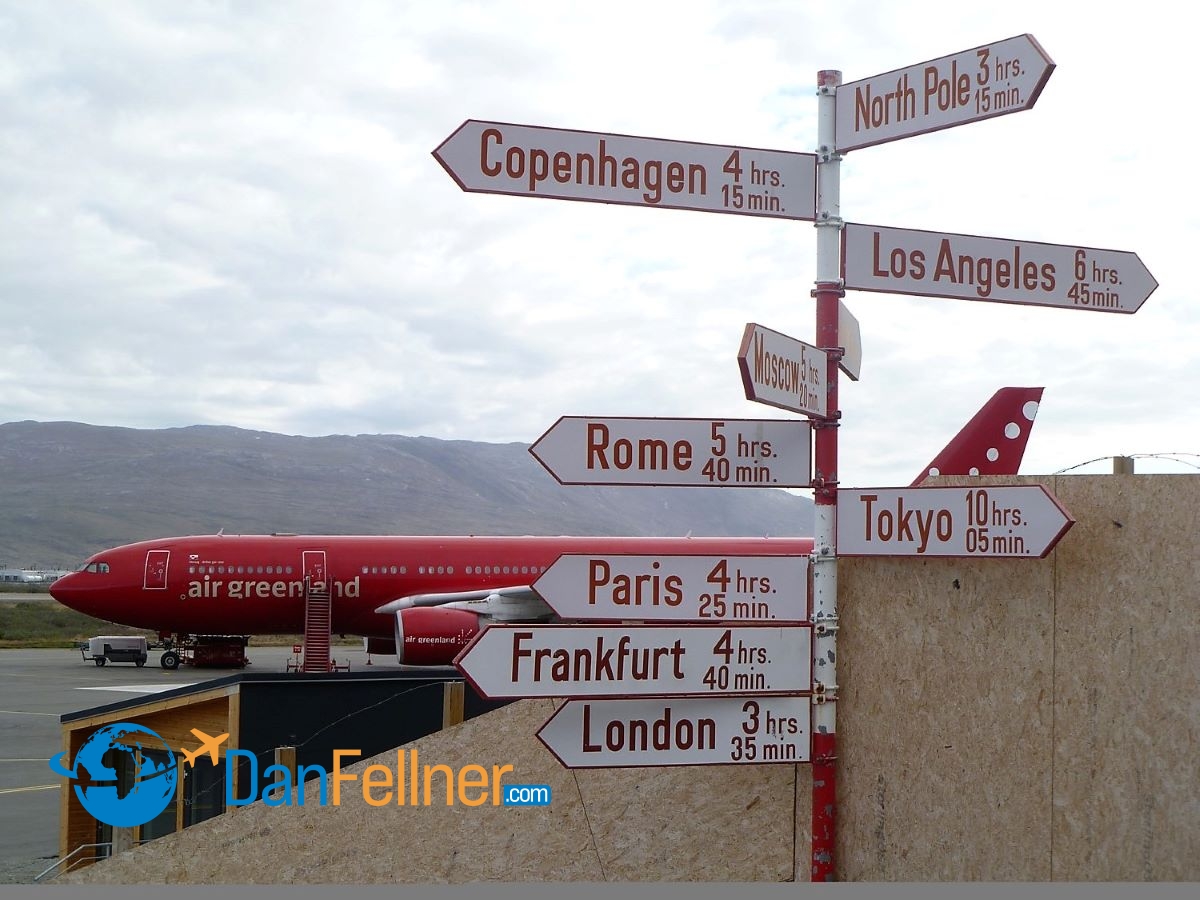
The only way to get to Greenland is by ship or direct flights from Iceland or Denmark into the international airport in Kangerlussuaq.
Our final stop was perhaps my favorite. Itilleq is a town of about 100 people just a few hundred yards north of the Arctic Circle. The villagers welcomed us into their homes for a Greenlandic custom called kaffeemik, a social gathering in which visitors are served coffee and homemade cakes.
Afterward, a team of the ship’s passengers played soccer against the locals on a grassless field overlooking the harbor. The team from Itilleq prevailed, 6-4. I was the only American on the Fram side and no doubt reinforced the stereotype that soccer isn’t our best sport.
No one on our team seemed to mind losing, though. We had just spent a week cruising around one of the most remote — and ruggedly beautiful — places on Earth.

© 2011 Dan Fellner



